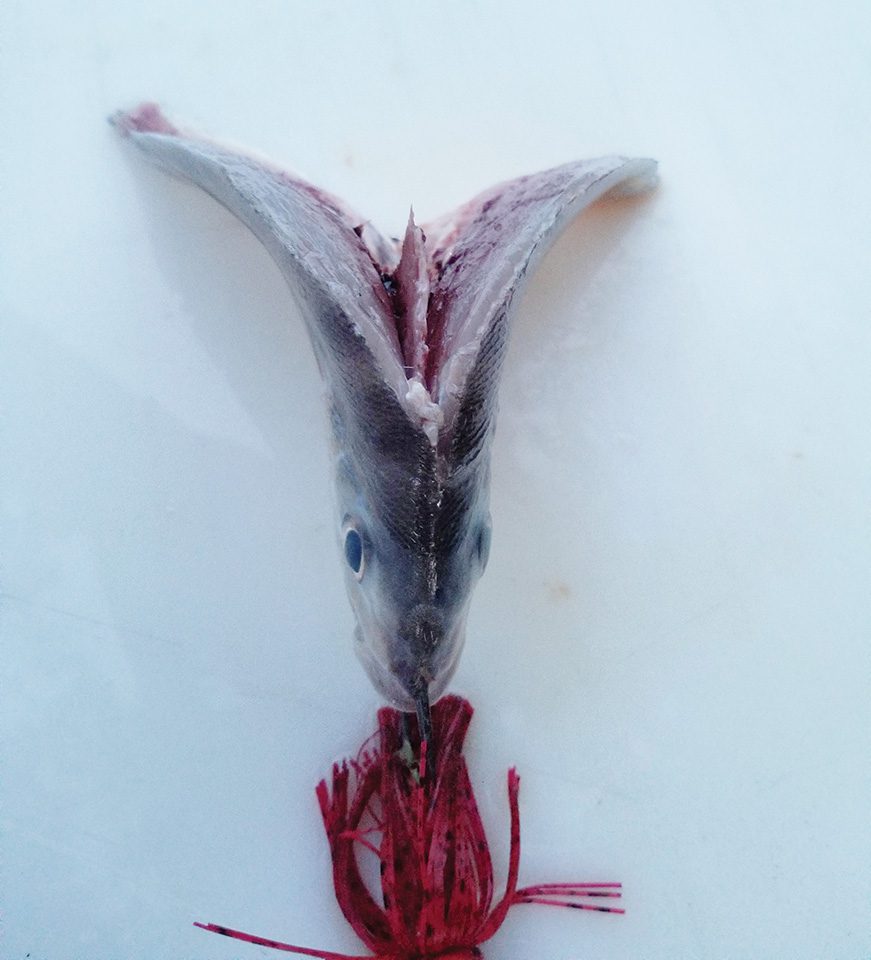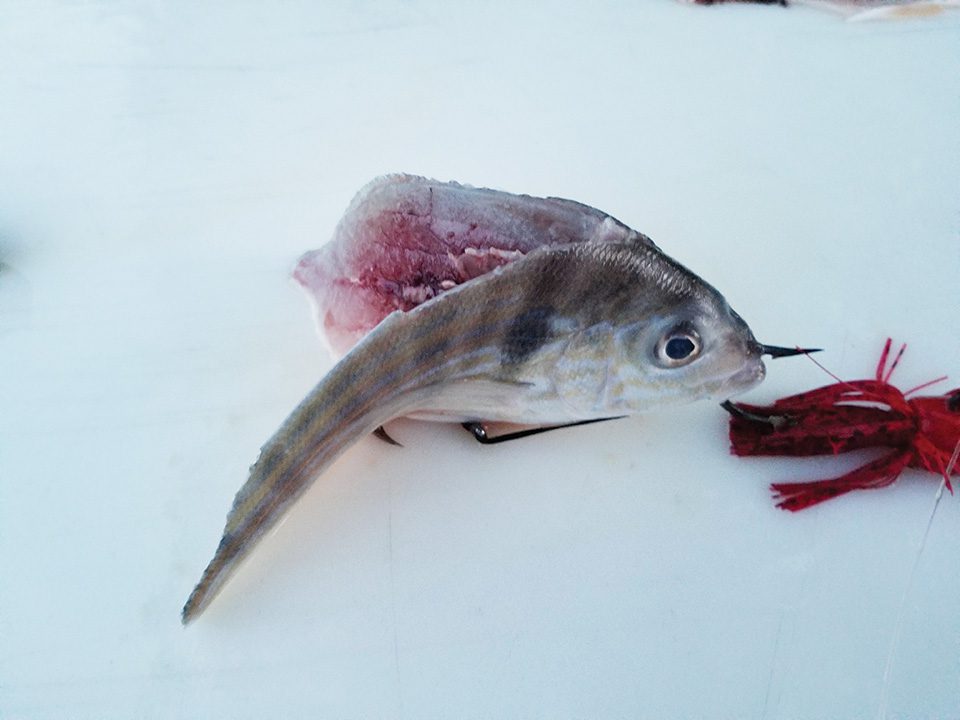By Tim Barefoot
In case you don’t already know and do this, here’s a trick that can save a day in the absence of live bait. If you’re going bottom fishing and pinfish, sardines, pogies or the others are hard to find with a cast net or sabiki, hedge your bets by keeping a couple dozen fresh or frozen baits about the diameter of a softball, or larger, in the cooler. Even in freshwater, when live gizzard shad or skipjacks are nowhere to be found, a box of frozen baits can still entice catfish, striped bass and others.
Dropping a whole dead bait down will get bites, but if you take a minute to “butterfly” them, these once dead baitfish come back to life in the current. No grouper or big snapper can resist them when presented properly. Grunts pinkies and seabass will hammer at it, and eventually get the hook, but grouper or anything else with a large enough mouth will simply inhale it. I’ve seen times when the bite would shut down, even with live bait, and a fresh butterflied beeliner (vermillion snapper) would get bit instantly.
The two fillets of any given baitfish attached to the head, without the backbone and dorsal fins are just a little too much to resist for the big meat-eaters. Granted, it’s also big shark candy, but as Popeye would say, “You pays your money, you takes your chances.”
Butterflying a bait is very simple. Anyone can go out and catch a pile of grunts, pinkies and seabass with small cut bait, but it’s no coincidence that the people who specifically go fishing for grouper are the ones that come home with the “brown fish” in the box. Don’t hesitate to butterfly a snapper or anything else you thought was once too large for bait. On the bottom, the smaller fish will hammer away at the two larger fillets, and out of nowhere a big gag or red grouper will finish it off. A 1 ½-pound beeliner, pinkie or Spanish mackerel is the perfect candidate for this job. When you feel the little ones banging on it, sit tight and don’t set the hook. Wait for the big bite; there will be no question when it gets eaten instead of pecked at.
Big butterflied mullet, spots and croakers are extremely effective inshore and nearshore for red or black drum. In freshwater, a butterflied bream, perch, crappie or other panfish is perfect for big catfish.
To butterfly a bait, start at the tail and fillet each side up to just behind the head and out the gut area. Then grab the tail and break the backbone out just behind the head. To see a detailed video of this, visit the website and click on “Butterflying a Bait.”
For more on Tim Barefoot visit barefootcatsandtackle.com

